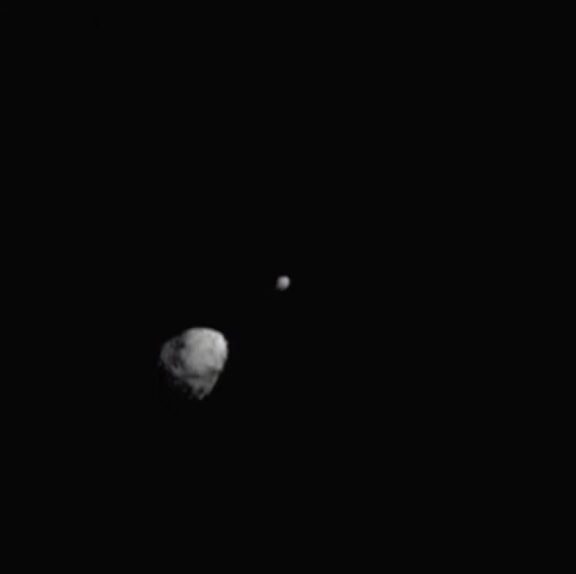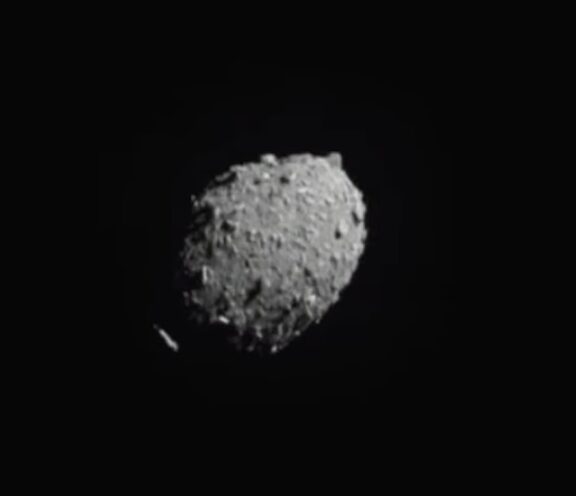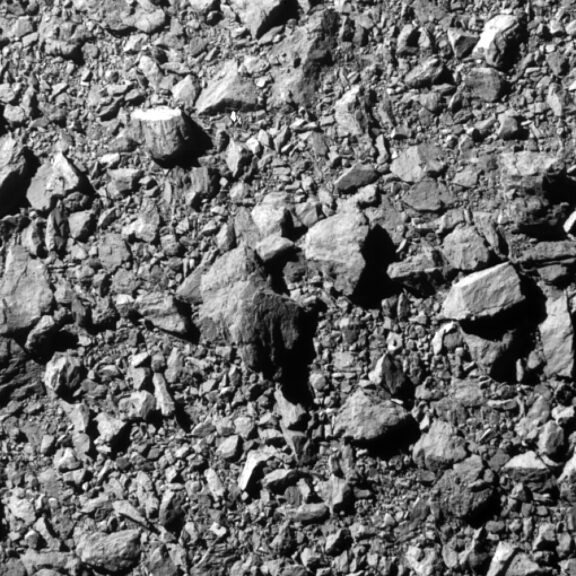See DART’s final images before it smashed into an asteroid

Written by
Rae Paoletta
Director of Content & Engagement, The Planetary Society
September 26, 2022
Today, Sept. 26, an unsuspecting asteroid was confronted by a NASA spacecraft sent to rock its rocky world. If the walloping went well, it could help protect Earth from dangerous asteroids down the line.
At 7:14 p.m. EDT (23:14 UTC), the Double Asteroid Redirection Test (DART) spacecraft ended its 10-month mission by colliding with Dimorphos, the satellite of a near-Earth asteroid called Didymos. DART aims to move the moonlet closer to its parent asteroid, changing its orbital period from 11.9 to 11.8 hours. It’s a seemingly small change with potentially huge implications.
With DART, NASA is testing the efficacy of a planetary defense strategy known as the kinetic impactor technique. In this method, a spacecraft must travel fast enough to not only hit, but move, an asteroid off its typical course so its path is no longer a threat to Earth. By measuring how far Dimorphos budged, scientists will better understand how viable the kinetic impactor technique is in real-life.
We’ll have some early updates on that soon. In the next few weeks or months, we could have images of DART’s impact and aftermath thanks to the Italian Space Agency’s LICIACube. LICIACube, or the Light Italian Cubesat for Imaging of Asteroids, hitched a ride to the Didymos system with DART to document today’s events.
Ground-based telescopes will also give us some insight into DART’s collision, but it won’t be until ESA’s Hera mission in 2026 that another spacecraft will thoroughly inspect the scene.
So while DART’s literal impact is over, its proverbial one lives on. The mystery of what happened is just beginning, and these images from DART's DRACO camera are our first clues:





Update (9/27): The Italian Space Agency released the first images from DART's impact taken by its LICIACube instrument. We've included a few of them below.


You can learn more about The Planetary Society’s efforts to defend Earth from dangerous asteroids here.
Support our core enterprises
Your gift today will go far to help us close out the year strong and keep up our momentum in 2026.
Donate

 Explore Worlds
Explore Worlds Find Life
Find Life Defend Earth
Defend Earth

